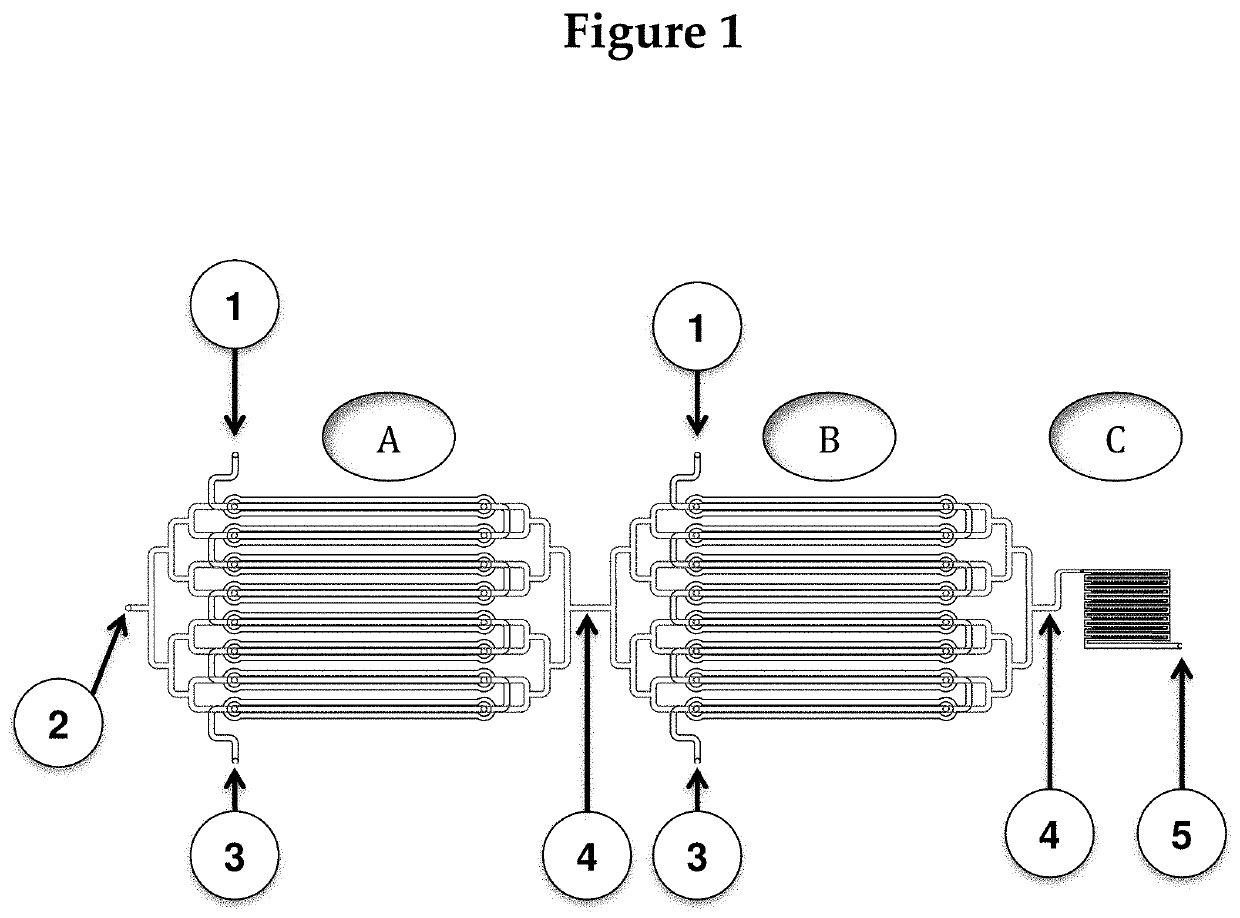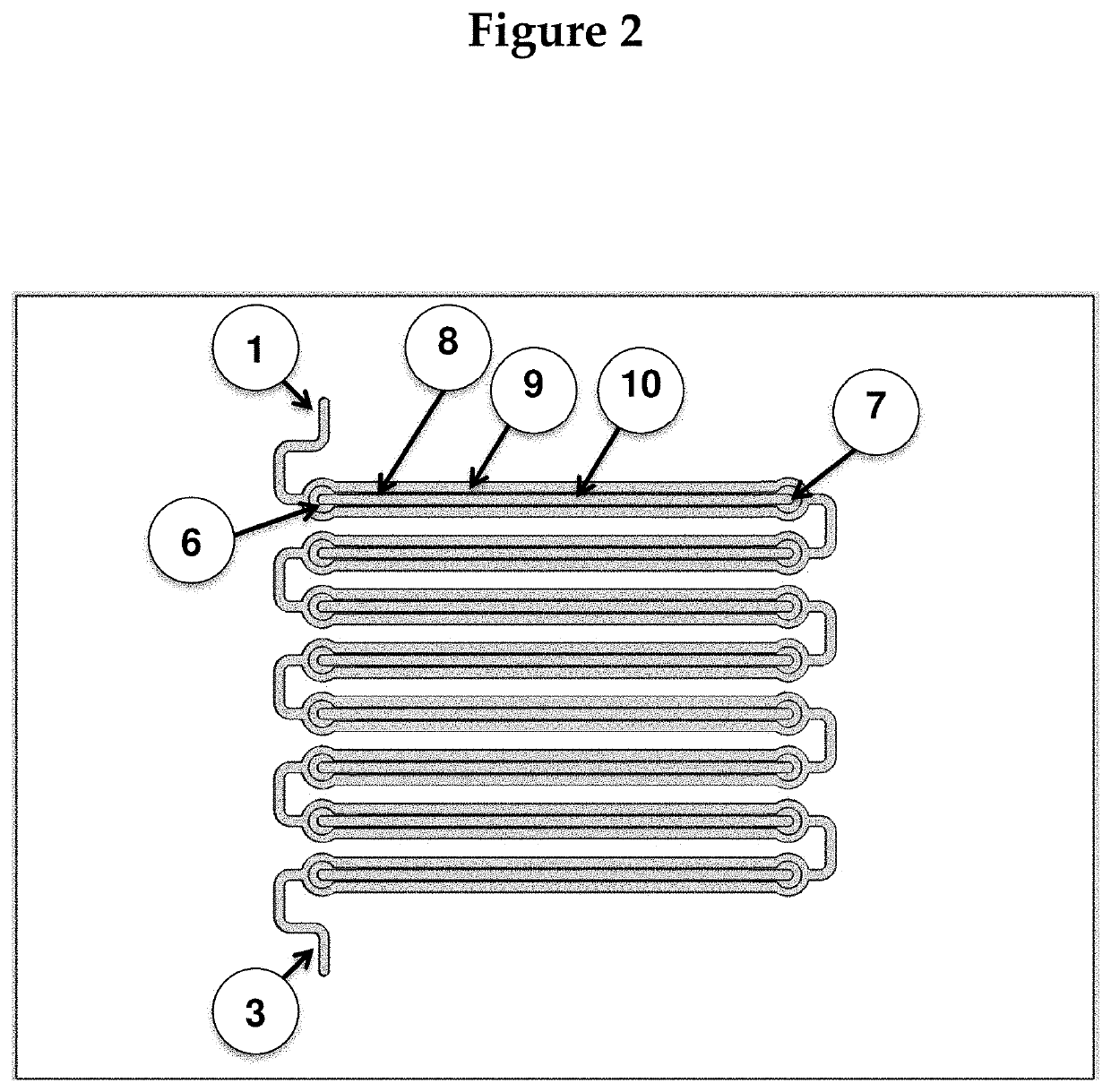A novel rapid individualized whole blood chip for antibiotic, drug, and food allergies
a technology of antibiotics and drugs, applied in the field of ex vivo diagnostics of allergies, can solve the problems of less effective, more toxic antibiotics, less accurate read-out, and increased cost, so as to improve the accuracy of the read-out and improve the effect of accuracy
- Summary
- Abstract
- Description
- Claims
- Application Information
AI Technical Summary
Benefits of technology
Problems solved by technology
Method used
Image
Examples
example 1
dic Chip Material
[0119]The microfluidic chip will be fabricated from a polymer such as (poly)dimethylsiloxane (PDMS) and glass, although we will consider using COC or PTE film instead of PDMS and glass to reduce the cost of material for mass production. All fluidic channels will be embedded into the PDMS material via common soft lithography manufacturing processes (e.g. according to the previously published protocol (Selimović et al., 2009).
example 2
dic Chip Fabrication and Structure
[0120]The following description is one of multiple possible chip designs. This description is only included for context, to visualize how the fluids (sample, reagents, and microbeads) will be routed on-chip and how the output (presence or absence of an immunological reaction) will be read out.
[0121]The chip will be created by molding it to photoresist patterns on silicon wafers. The device will then be assembled from three adjacent fluidic layers: two fluidic (channel / chamber) layers and one control layer, such that the channel layers guides fluids (blood) to the assay chambers (where reactions of interest take place), and microvalves on the control layer can be activated to close off all chambers from the fluidic channels. (The rough fabrication protocol for such microvalves can be found in Selimović et al., 2009). FIG. 4 shows the magnified view of a part of the chip. For simplicity, the control layer is not shown.
[0122]The drawing in FIG. 4 also ...
example 3
reatment of the Microbeads with Antibodies
[0125]Instead of using pretreated microbeads, the microbeads can be pretreated on chip by adding a treatment section before the first section A shown in FIG. 1.
PUM
| Property | Measurement | Unit |
|---|---|---|
| size | aaaaa | aaaaa |
| size | aaaaa | aaaaa |
| size | aaaaa | aaaaa |
Abstract
Description
Claims
Application Information
 Login to View More
Login to View More - R&D
- Intellectual Property
- Life Sciences
- Materials
- Tech Scout
- Unparalleled Data Quality
- Higher Quality Content
- 60% Fewer Hallucinations
Browse by: Latest US Patents, China's latest patents, Technical Efficacy Thesaurus, Application Domain, Technology Topic, Popular Technical Reports.
© 2025 PatSnap. All rights reserved.Legal|Privacy policy|Modern Slavery Act Transparency Statement|Sitemap|About US| Contact US: help@patsnap.com



